The Ultimate Guide to Thai Curries
Published Feb 27, 2020•Updated Sep 10, 2024
This post may contain affiliate links. Please read our disclosure policy.
Ever wondered what the difference is between Thai curries – Green, Red, Yellow, Panang, and Massaman? The Ultimate Guide to Thai Curries is for you!
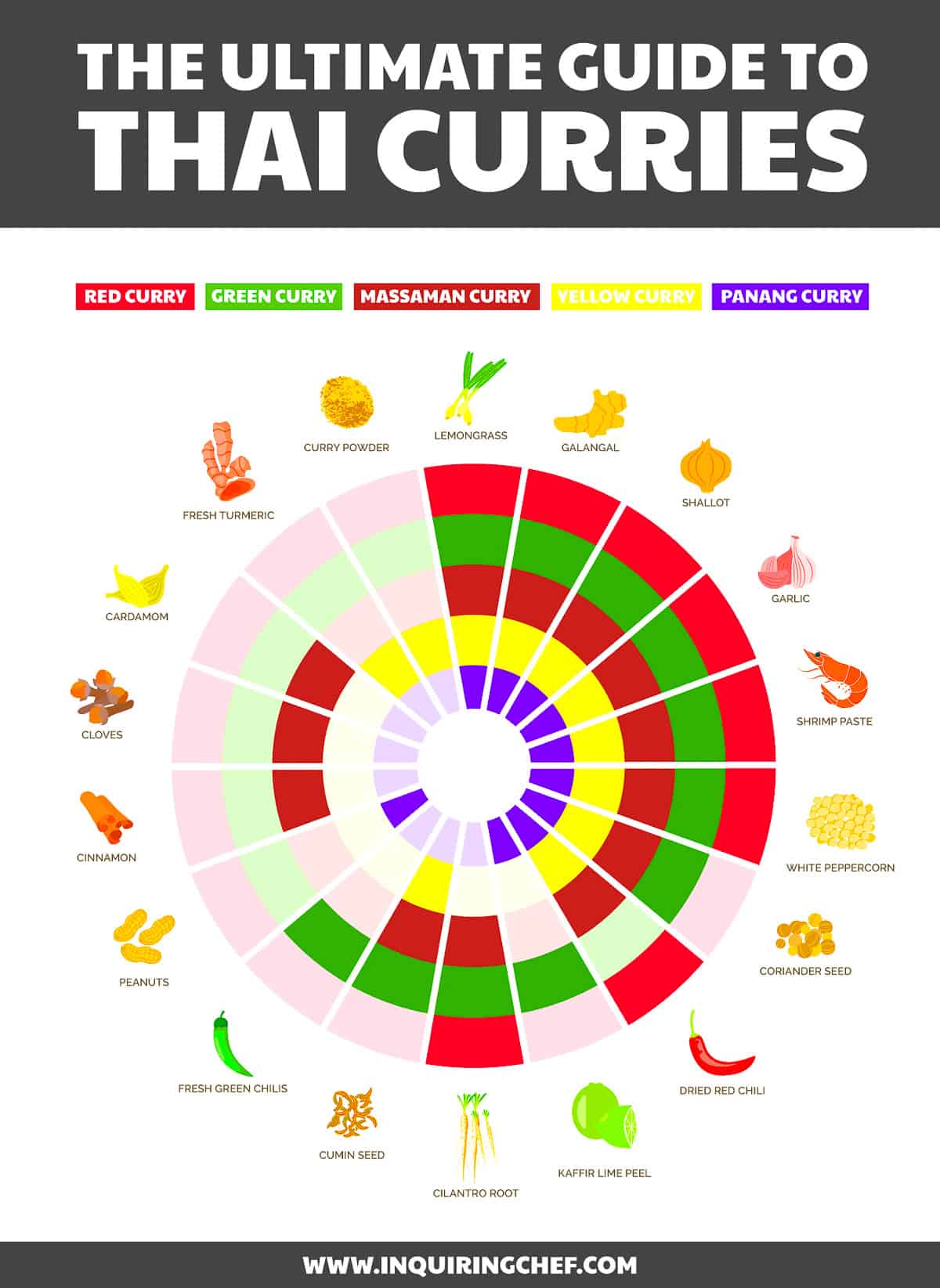
It’s been a week filled with Thai Curries here (Green Curry, Red Curry, and Massaman Curry all made an appearance), but we’re rounding out the week with an overview of this delicious category of Thai cuisine.
And while I’m calling this the “ultimate” guide to Thai curries, it’s really a guide to the most well-known Thai curries. There are as many types of Thai curry, and variations on those types as there are palm trees in Thailand. Curry is a rich and diverse food and this really only begins to scratch the surface. Every family has their own unique twist, but the basics are pretty consistent. And if you’re wanting to learn more, this is a great place to start!
So let’s jump right in and talk curry!
What are the flavors of Thai curry?
As you can see in the image above, most Thai curries start out with a similar flavor base consisting of lemongrass, galangal, shrimp paste, and other aromatics pounded into a smooth paste. Layered on top of those ingredients are the flavors that make each curry unique.
- Red Curry is bright and heavily spiced with dried red chilis.
- Green Curry uses fresh green chilis and is bright and herby from fresh cilantro root and makrut lime leaves.
- Massaman Curry is mild in heat and loaded with spices found in Indian cuisine like cinnamon and cardamom.
- Yellow Curry draws on turmeric and dried curry for a rich, savory flavor and yellow color.
- Panang Curry has the nutty, mellow flavor and texture of roasted peanuts ground right into the curry paste.
How to Make Thai Curry Paste
The steps for making Thai Curry Paste are:
- Soak dried red chili peppers (if using)
- Roast Shrimp Paste
- Toast dry spices in a skillet or wok
- Grind dry spices in a mortar and pestle
- Grind all ingredients together until a smooth paste forms
Pin this now to save it for later
Pin It NowMortar and Pestle, Food Processor, or Blender
If you’ve decided to make homemade Thai curry paste, you’ve already decided to take on a bit of a project by tracking down and preparing your ingredients, so don’t stress over the method you use to make it. The traditional method for making Thai curry paste is to pound everything together using a mortar and pestle, but more modern tools can certainly be used to make a very good version.
A food processor will finely chop the ingredients, leaving the paste with some texture. A high powered blender will usually result in a much more smooth paste than a food processor. Either way, it’s a good idea to first grind the dried spices with a spice grinder so that they can easily incorporate with the rest of the ingredients. The other difference if using a food processor or blender is that you often need to add liquid to the machine so that the ingredients reach the blades. If needed, add water a bit at a time to help the paste form. (The water will cook off during cooking, leaving just the paste behind.)
(The batches of curry paste shown below were made in the food processor with 2-3 Tablespoons of water added to each batch.)
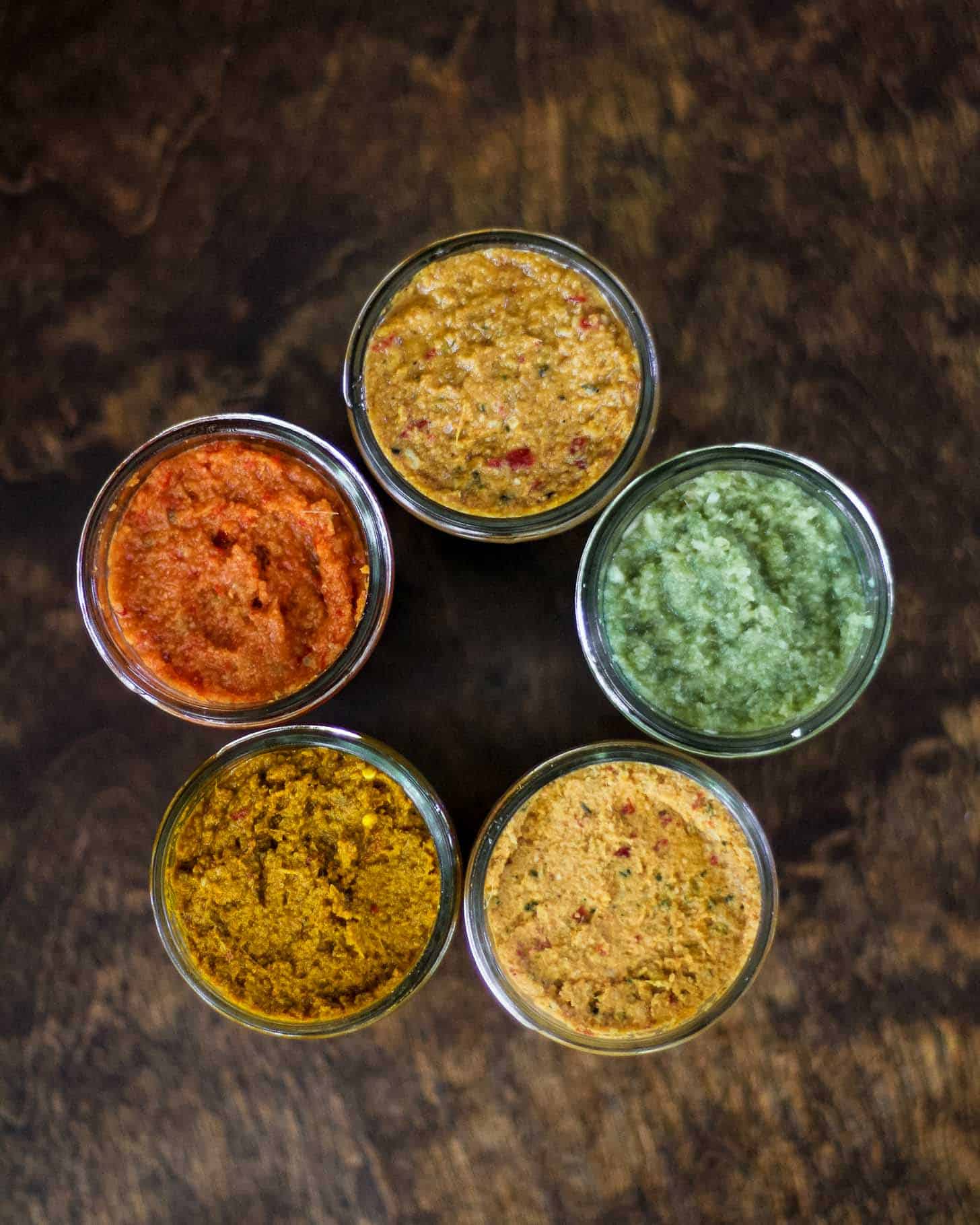
How to Store Curry Paste
The storage time for curry paste varies slightly depending on the ingredients. Green curry, for example, uses fresh green chilis and will start to discolor and lose some flavor as it sits in the fridge. However, most homemade curries can be stored in the refrigerator for at least a week and in the freezer for 6 months to a year. I like to store mine in 8-ounce jars with tight-fitting lits.

Shrimp Paste in Thai Curry
Shrimp paste gives Thai curry pastes a distinctive, authentically Thai flavor. It’s also a source of “umami” that adds depth to the curries the paste is used in. It should always be roasted for a few minutes before being added to the curry paste. The easiest way to roast the shrimp paste is to wrap it in foil and fully enclose it. Then place the packet of shrimp paste on a hot skillet and cook on both sides until fragrant, 2 to 3 minutes on each side. This helps to release the flavors.
Vegetarian / Vegan Thai Curry
If you want to make a vegetarian or vegan curry paste, all you have to do is skip the shrimp paste. You can always add other sources of umami flavor to the curry later – some soy sauce is a good option. (Don’t add soy sauce to the curry paste itself.)
What Can I Make with Thai Curry Paste?
I’m so glad you asked! 😉 If you haven’t already, be sure to hop on over and check out the full recipes for the Thai curry paste and the curries that go along with them:
Thai Green Curry with Chicken
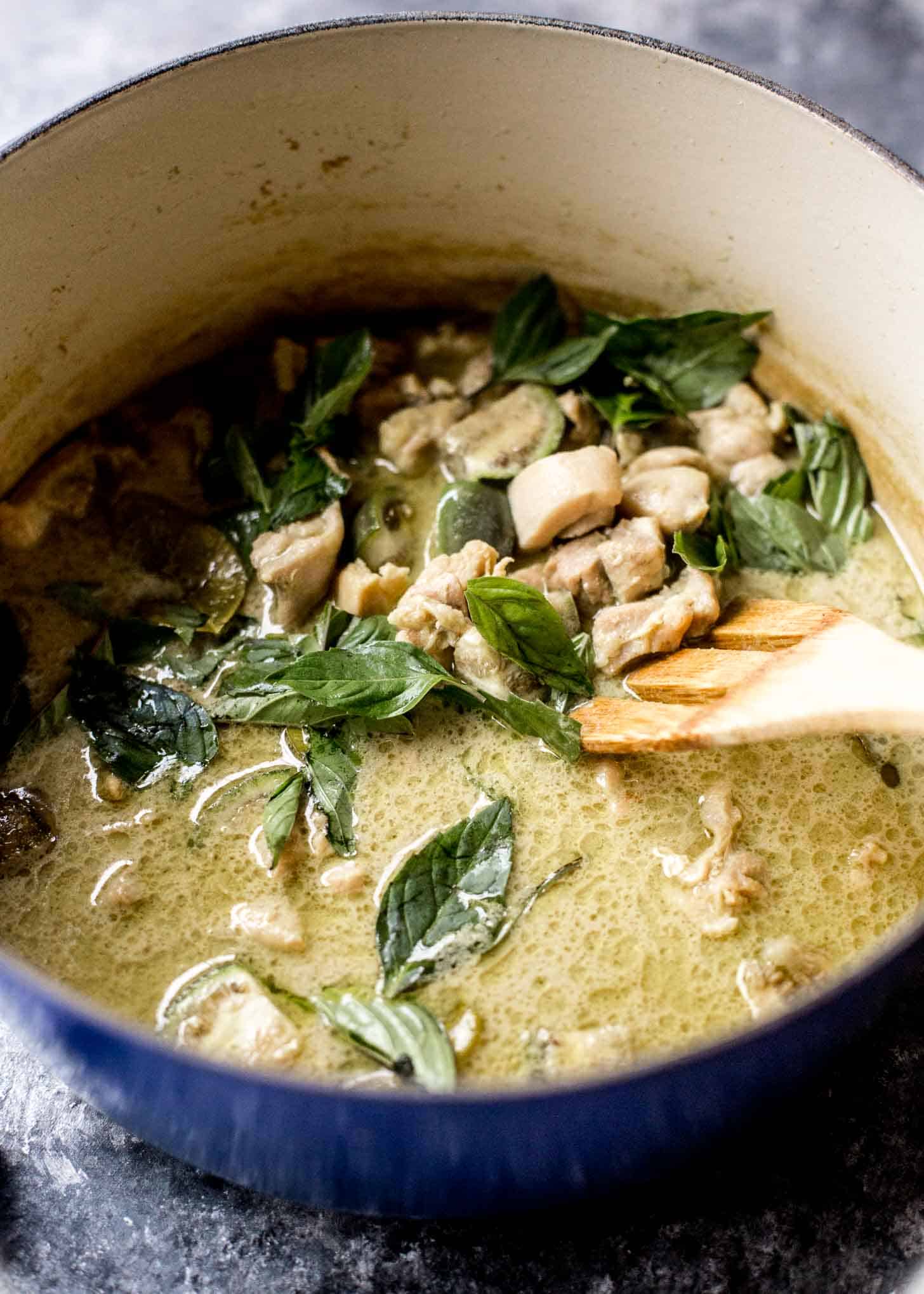
Thai Red Curry with Chicken
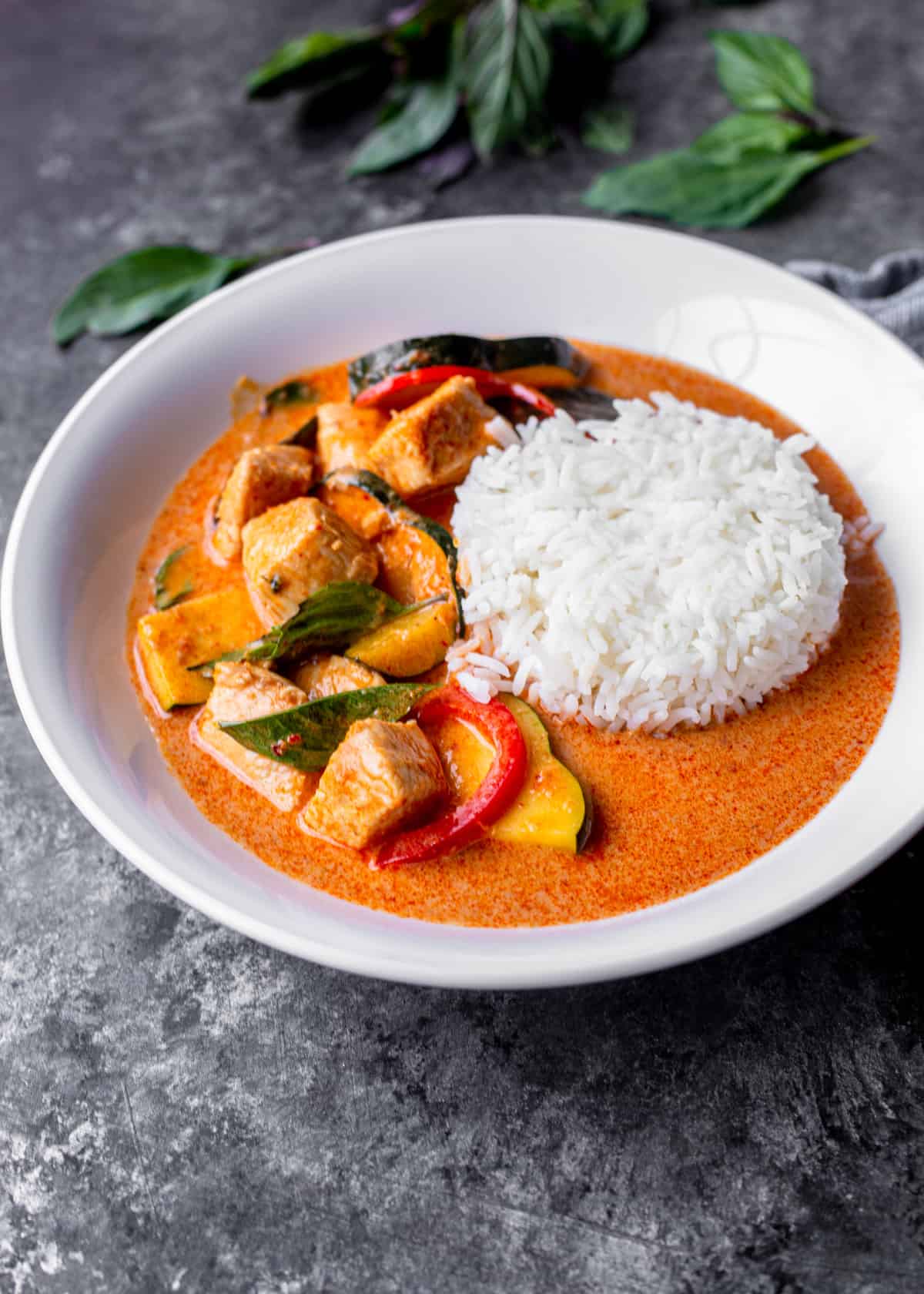
Thai Massaman Curry with Beef
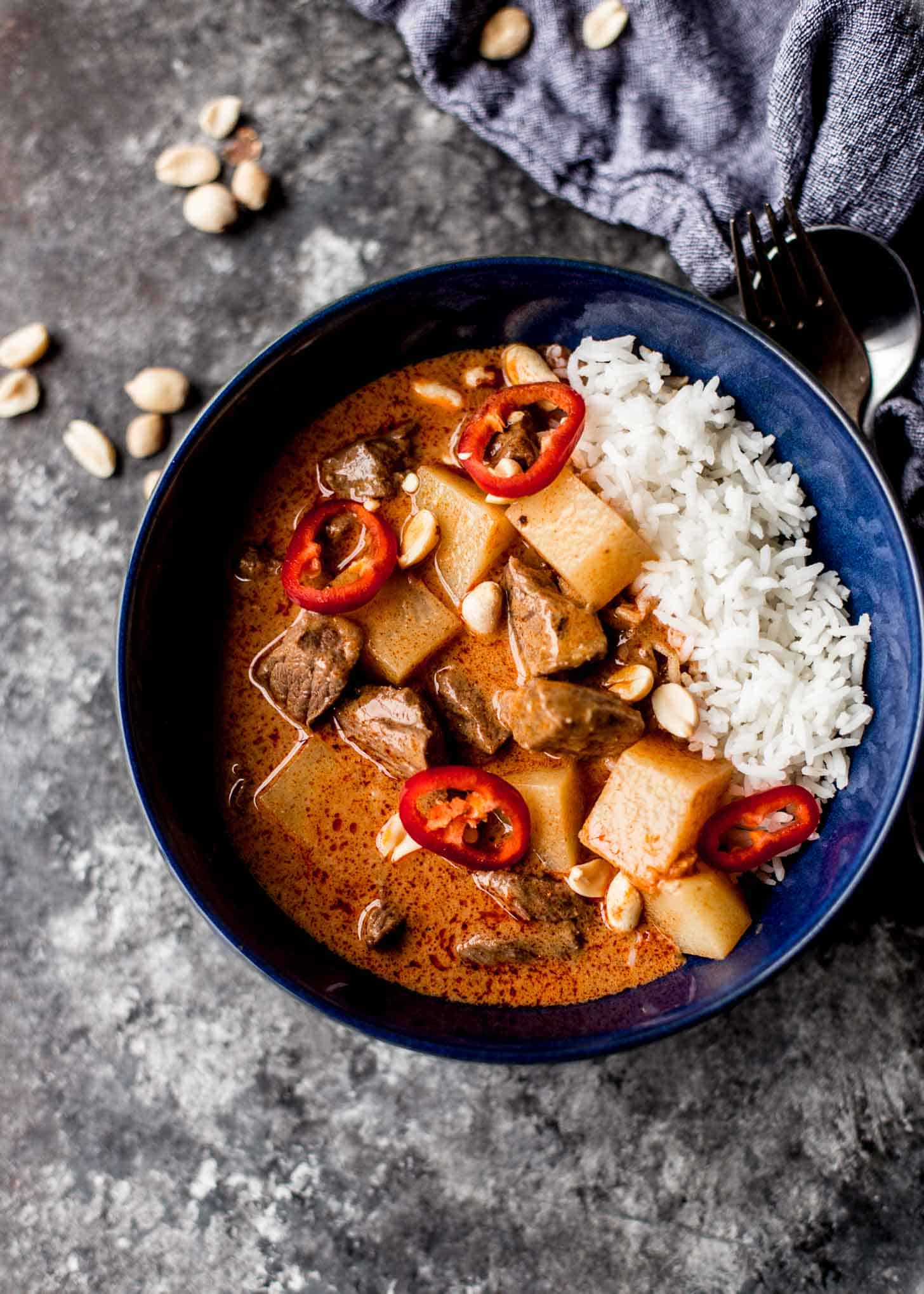
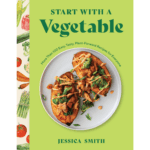
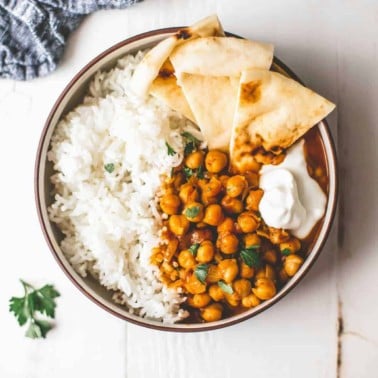

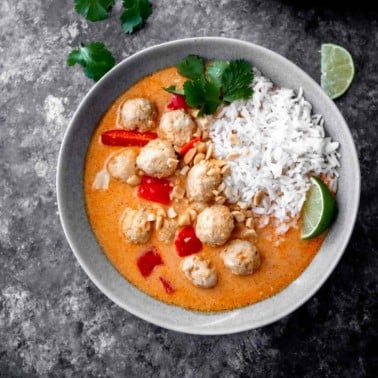
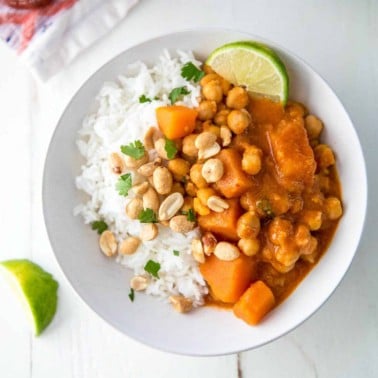
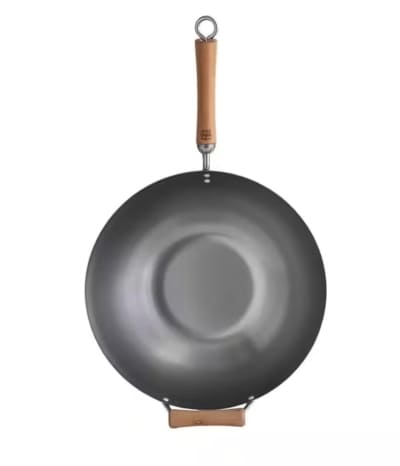
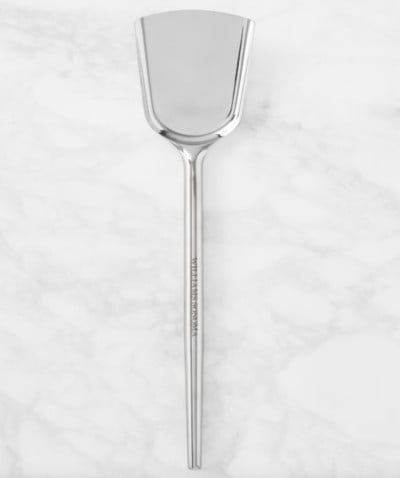
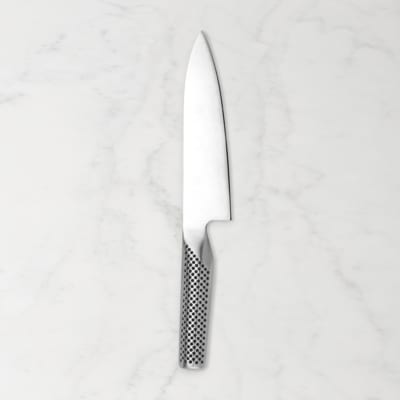
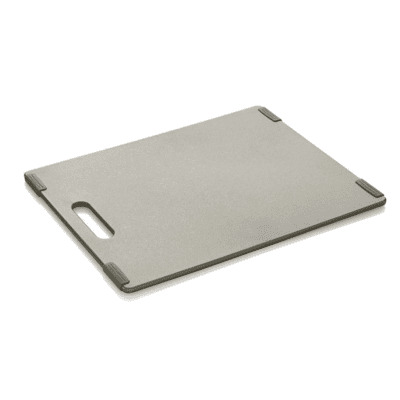
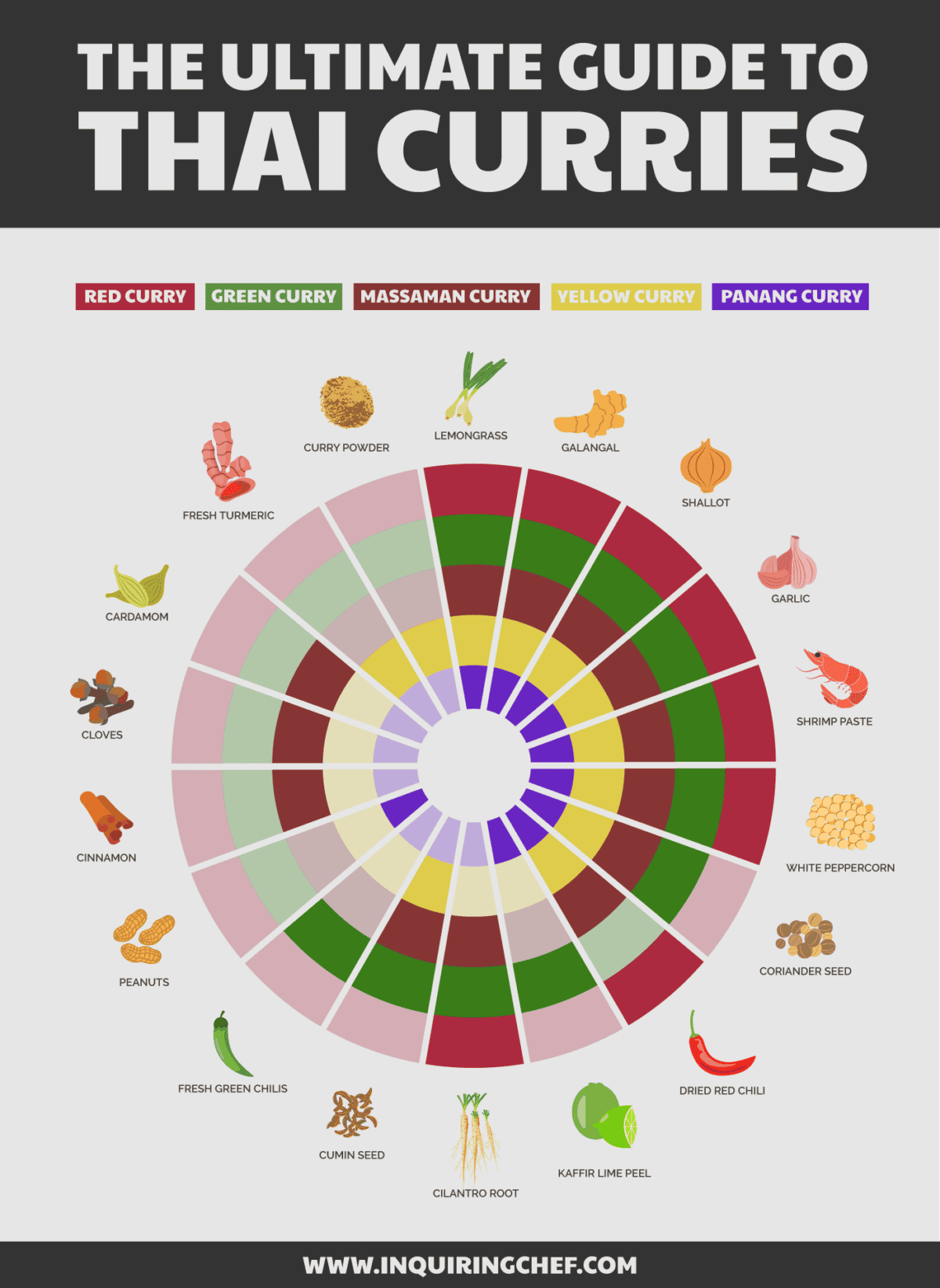
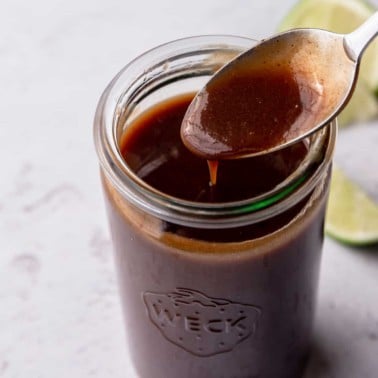

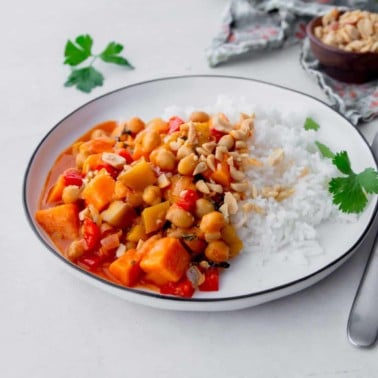









This is such a cool graphic! Thanks.
Wow, thanks for your informative graphic. I live in Malaysia and my late grandmother is a Siamese, I was fortunate enough to have grown up enjoying various Thai dishes cooked by her, one of those was yellow curry, although I never knew the exact Thai name for the curry and all the ingredients used but I can tell from it’s color. Since me and my family missed the curry badly, I started searching online for recipes all these years, trying to replicate one, however they were nowhere near perfect or came close to it. Well, I guess the truth is every cook is having their own personal unique modifications and adjustments to the ingredient combo, amount of ingredients used and preparation method. Nevertheless, I have managed to learn and recognized all the different Thai curry recipes online. It would be even perfect if some other significant ingredients are also added in your graphic, such as coconut milk, fresh kaffir lime leaves, fresh ginger, candlenuts, black peppercorns, coconut sugar and Thai basil leaves. Hope that helps!
Thanks so much for your recommendations! You’re right, there are more variations on Thai curry than I could ever hope to capture. But they’re all delicious. 😉
I love that curries chart!
I have a question about yellow curry that has tormented me for a decade now. I love yellow curry, but as I’ve travelled the USA and visited literally a hundred plus Thai restaurants in different states, I’ve learned that only 1 in 10 Thai restaurants makes delicious yellow curry. The rest are bland and tasteless. We’ve tried to make curry at home, and while better than most, it’s not yet in the “perfect” category. What is-are the magic ingredient(s) that the 1 in 10 delicious curries have that the 9 in 10 bland curries don’t?
One thing I’ve noticed is a giveaway. The bland curries tend to be visually bland. They don’t have the rich yellow color with specs of red.
That’s a great question! And I completely agree, I’ve had far more lackluster yellow curries than great ones. I think the fresh ingredients are key to the good flavor – really fresh turmeric and galangal make a big difference. But I also always wonder about those dry spices – curry powder and cumin seed. Those really lose a lot of flavor as they sit, so if they’ve been on a shelf for a bit, they won’t impart nearly as much flavor. When I make the finished curries using the past, I always add a good amount of fish sauce and lime juice and find that those make the natural flavors in the curry paste pop.
Super helpful graphic! I’ve been eating Thai food for a long time and didn’t figure it out until just now when I read this article.
I’m not surprised that I like curries Green >red>panang=yellow>massaman after reading the chart. LOL.
Thanks for the great information and thanks also for your great recipes
This is awesome! I’m allergic to cinnamon which usually makes me wary of foods I can’t find full ingredient lists for (and even then it *might* be inside “Spices”), but this helps a lot! Obviously, there could still be variations with cinnamon, but it’s a great basic guide!
So glad this is helpful! I know how challenging it can be to navigate different cuisines with allergies.
Super nice way to present ingredientes in different curries, easy to follow and learn, thanks
Is there a way to find out which curries uses more/less chilies, by proportion, to the rest of the recipe in order to determine traditional spiciness levels? I’m assuming (and maybe wrongly) that green curry might be the least spiciest since it’s a fresh chili, and also it’s easier to remove the seeds and are not roasted with them?
It’s such a good question, but in my experience it can vary so much. When I lived in Bangkok the green curries actually always seemed to be the spiciest, but I think you’re right that it might be the easiest one to control the heat on if you make it yourself. I agree that the best way to reduce the spiciness in any chili paste is to remove the seeds. I’ve been known to remove the seeds from the dried red chilis I use as well, so I’ll often make a very mild red curry paste. I have photos and tips for doing that over in this post if that’s helpful – https://inquiringchef.com/vegetarian-nam-prik-pao-thai-chili-paste/
REALLY amazing graphic, well done!!!
I agree. The graphic really helps in visualizing the differences and similarities.
I’m trying to find a curry paste that isn’t too spicy as my youngest daughter can’t eat spicy things but we LOVE Thai food. Thank you
Hi Shanie – I find the American brands to be the least spicy of the bunch. I just made soup for my six-year-olds and two-year-old using Thai Kitchen Red Curry Paste and none of them had any trouble with the spice. Using coconut milk will help to temper the spice that’s there and keep in mind that you can always start with a small amount and whisk more in later (to the whole dish or to just a portion for the adults). Hope that helps!
Maesri Massaman Curry Paste
This is my go-to as it isn’t hot at all
Thanks for sharing!
I found your site while looking for how to make a Moroccan Seasoning Blend. I found your Thai recipes and can’t wait to try to make some of your curries. Your recipes and ideas for make-ahead meals to freeze are very concise and explicit in their directions. I love food from all over the world, but making such recipes has been an infrequent adventure for me. Your site has inspired me to try to make such dishes that I can pull from my freezer or put together easily on a more frequent basis. Thank you so much from Asheville, NC.